Y. Li
Gradients Stand-in for Defending Deep Leakage in Federated Learning
Oct 11, 2024



Abstract:Federated Learning (FL) has become a cornerstone of privacy protection, shifting the paradigm towards localizing sensitive data while only sending model gradients to a central server. This strategy is designed to reinforce privacy protections and minimize the vulnerabilities inherent in centralized data storage systems. Despite its innovative approach, recent empirical studies have highlighted potential weaknesses in FL, notably regarding the exchange of gradients. In response, this study introduces a novel, efficacious method aimed at safeguarding against gradient leakage, namely, ``AdaDefense". Following the idea that model convergence can be achieved by using different types of optimization methods, we suggest using a local stand-in rather than the actual local gradient for global gradient aggregation on the central server. This proposed approach not only effectively prevents gradient leakage, but also ensures that the overall performance of the model remains largely unaffected. Delving into the theoretical dimensions, we explore how gradients may inadvertently leak private information and present a theoretical framework supporting the efficacy of our proposed method. Extensive empirical tests, supported by popular benchmark experiments, validate that our approach maintains model integrity and is robust against gradient leakage, marking an important step in our pursuit of safe and efficient FL.
Study of Robust Direction Finding Based on Joint Sparse Representation
May 27, 2024Abstract:Standard Direction of Arrival (DOA) estimation methods are typically derived based on the Gaussian noise assumption, making them highly sensitive to outliers. Therefore, in the presence of impulsive noise, the performance of these methods may significantly deteriorate. In this paper, we model impulsive noise as Gaussian noise mixed with sparse outliers. By exploiting their statistical differences, we propose a novel DOA estimation method based on sparse signal recovery (SSR). Furthermore, to address the issue of grid mismatch, we utilize an alternating optimization approach that relies on the estimated outlier matrix and the on-grid DOA estimates to obtain the off-grid DOA estimates. Simulation results demonstrate that the proposed method exhibits robustness against large outliers.
CPSOR-GCN: A Vehicle Trajectory Prediction Method Powered by Emotion and Cognitive Theory
Nov 14, 2023



Abstract:Active safety systems on vehicles often face problems with false alarms. Most active safety systems predict the driver's trajectory with the assumption that the driver is always in a normal emotion, and then infer risks. However, the driver's trajectory uncertainty increases under abnormal emotions. This paper proposes a new trajectory prediction model: CPSOR-GCN, which predicts vehicle trajectories under abnormal emotions. At the physical level, the interaction features between vehicles are extracted by the physical GCN module. At the cognitive level, SOR cognitive theory is used as prior knowledge to build a Dynamic Bayesian Network (DBN) structure. The conditional probability and state transition probability of nodes from the calibrated SOR-DBN quantify the causal relationship between cognitive factors, which is embedded into the cognitive GCN module to extract the characteristics of the influence mechanism of emotions on driving behavior. The CARLA-SUMO joint driving simulation platform was built to develop dangerous pre-crash scenarios. Methods of recreating traffic scenes were used to naturally induce abnormal emotions. The experiment collected data from 26 participants to verify the proposed model. Compared with the model that only considers physical motion features, the prediction accuracy of the proposed model is increased by 68.70%. Furthermore,considering the SOR-DBN reduces the prediction error of the trajectory by 15.93%. Compared with other advanced trajectory prediction models, the results of CPSOR-GCN also have lower errors. This model can be integrated into active safety systems to better adapt to the driver's emotions, which could effectively reduce false alarms.
REWAFL: Residual Energy and Wireless Aware Participant Selection for Efficient Federated Learning over Mobile Devices
Sep 24, 2023Abstract:Participant selection (PS) helps to accelerate federated learning (FL) convergence, which is essential for the practical deployment of FL over mobile devices. While most existing PS approaches focus on improving training accuracy and efficiency rather than residual energy of mobile devices, which fundamentally determines whether the selected devices can participate. Meanwhile, the impacts of mobile devices' heterogeneous wireless transmission rates on PS and FL training efficiency are largely ignored. Moreover, PS causes the staleness issue. Prior research exploits isolated functions to force long-neglected devices to participate, which is decoupled from original PS designs. In this paper, we propose a residual energy and wireless aware PS design for efficient FL training over mobile devices (REWAFL). REW AFL introduces a novel PS utility function that jointly considers global FL training utilities and local energy utility, which integrates energy consumption and residual battery energy of candidate mobile devices. Under the proposed PS utility function framework, REW AFL further presents a residual energy and wireless aware local computing policy. Besides, REWAFL buries the staleness solution into its utility function and local computing policy. The experimental results show that REW AFL is effective in improving training accuracy and efficiency, while avoiding "flat battery" of mobile devices.
Study of Enhanced MISC-Based Sparse Arrays with High uDOFs and Low Mutual Coupling
Sep 16, 2023
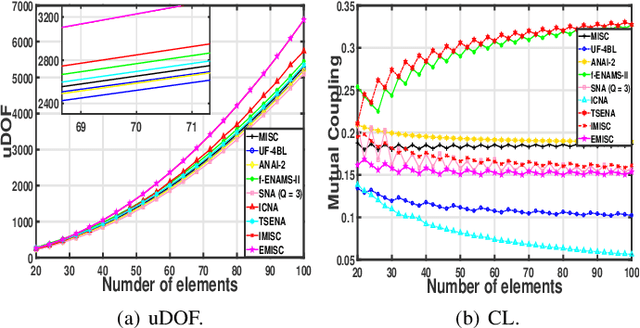
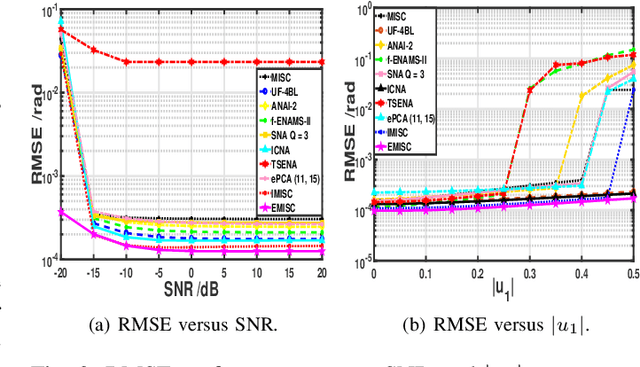
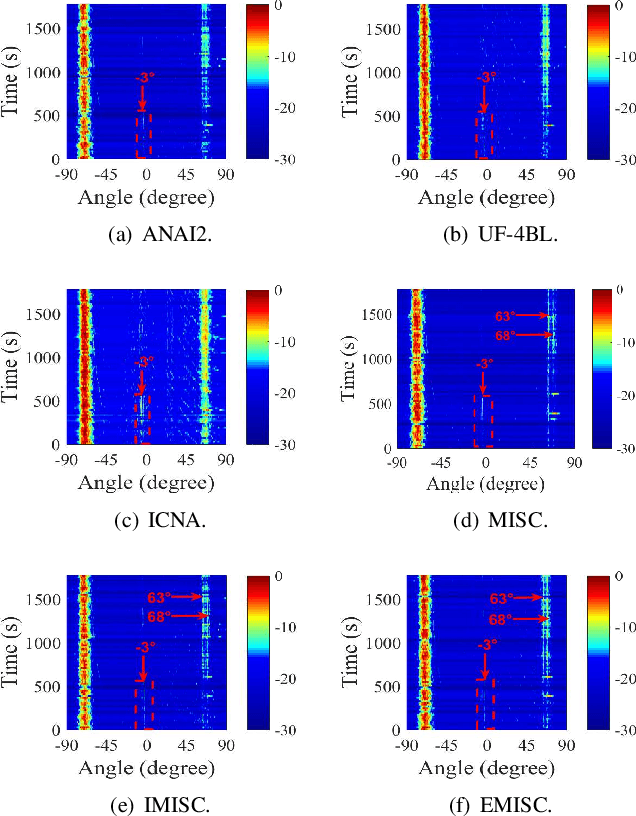
Abstract:In this letter, inspired by the maximum inter-element spacing (IES) constraint (MISC) criterion, an enhanced MISC-based (EMISC) sparse array (SA) with high uniform degrees-of-freedom (uDOFs) and low mutual-coupling (MC) is proposed, analyzed and discussed in detail. For the EMISC SA, an IES set is first determined by the maximum IES and number of elements. Then, the EMISC SA is composed of seven uniform linear sub-arrays (ULSAs) derived from an IES set. An analysis of the uDOFs and weight function shows that, the proposed EMISC SA outperforms the IMISC SA in terms of uDOF and MC. Simulation results show a significant advantage of the EMISC SA over other existing SAs.
Observation of high-energy neutrinos from the Galactic plane
Jul 10, 2023Abstract:The origin of high-energy cosmic rays, atomic nuclei that continuously impact Earth's atmosphere, has been a mystery for over a century. Due to deflection in interstellar magnetic fields, cosmic rays from the Milky Way arrive at Earth from random directions. However, near their sources and during propagation, cosmic rays interact with matter and produce high-energy neutrinos. We search for neutrino emission using machine learning techniques applied to ten years of data from the IceCube Neutrino Observatory. We identify neutrino emission from the Galactic plane at the 4.5$\sigma$ level of significance, by comparing diffuse emission models to a background-only hypothesis. The signal is consistent with modeled diffuse emission from the Galactic plane, but could also arise from a population of unresolved point sources.
* Submitted on May 12th, 2022; Accepted on May 4th, 2023
Study of Novel Sparse Array Design Based on the Maximum Inter-Element Spacing Criterion
Aug 20, 2022
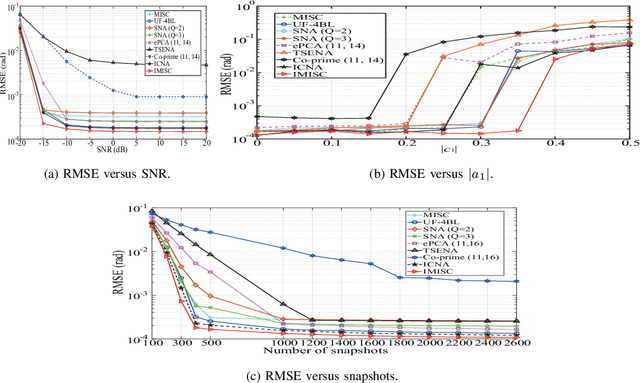
Abstract:A novel sparse array (SA) structure is proposed based on the maximum inter-element spacing (IES) constraint (MISC) criterion. Compared with the traditional MISC array, the proposed SA configurations, termed as improved MISC (IMISC) has significantly increased uniform degrees of freedom (uDOF) and reduced mutual coupling. In particular, the IMISC arrays are composed of six uniform linear arrays (ULAs), which can be determined by an IES set. The IES set is constrained by two parameters, namely the maximum IES and the number of sensors. The uDOF of the IMISC arrays is derived and the weight function of the IMISC arrays is analyzed as well. The proposed IMISC arrays have a great advantage in terms of uDOF against the existing SAs, while their mutual coupling remains at a low level. Simulations are carried out to demonstrate the advantages of the IMISC arrays.
Energy-Aware Edge Association for Cluster-based Personalized Federated Learning
Feb 06, 2022



Abstract:Federated Learning (FL) over wireless network enables data-conscious services by leveraging the ubiquitous intelligence at network edge for privacy-preserving model training. As the proliferation of context-aware services, the diversified personal preferences causes disagreeing conditional distributions among user data, which leads to poor inference performance. In this sense, clustered federated learning is proposed to group user devices with similar preference and provide each cluster with a personalized model. This calls for innovative design in edge association that involves user clustering and also resource management optimization. We formulate an accuracy-cost trade-off optimization problem by jointly considering model accuracy, communication resource allocation and energy consumption. To comply with parameter encryption techniques in FL, we propose an iterative solution procedure which employs deep reinforcement learning based approach at cloud server for edge association. The reward function consists of minimized energy consumption at each base station and the averaged model accuracy of all users. Under our proposed solution, multiple edge base station are fully exploited to realize cost efficient personalized federated learning without any prior knowledge on model parameters. Simulation results show that our proposed strategy outperforms existing strategies in achieving accurate learning at low energy cost.
A Convolutional Neural Network based Cascade Reconstruction for the IceCube Neutrino Observatory
Jan 27, 2021Abstract:Continued improvements on existing reconstruction methods are vital to the success of high-energy physics experiments, such as the IceCube Neutrino Observatory. In IceCube, further challenges arise as the detector is situated at the geographic South Pole where computational resources are limited. However, to perform real-time analyses and to issue alerts to telescopes around the world, powerful and fast reconstruction methods are desired. Deep neural networks can be extremely powerful, and their usage is computationally inexpensive once the networks are trained. These characteristics make a deep learning-based approach an excellent candidate for the application in IceCube. A reconstruction method based on convolutional architectures and hexagonally shaped kernels is presented. The presented method is robust towards systematic uncertainties in the simulation and has been tested on experimental data. In comparison to standard reconstruction methods in IceCube, it can improve upon the reconstruction accuracy, while reducing the time necessary to run the reconstruction by two to three orders of magnitude.
A Deep Neural Network for Pixel-Level Electromagnetic Particle Identification in the MicroBooNE Liquid Argon Time Projection Chamber
Aug 22, 2018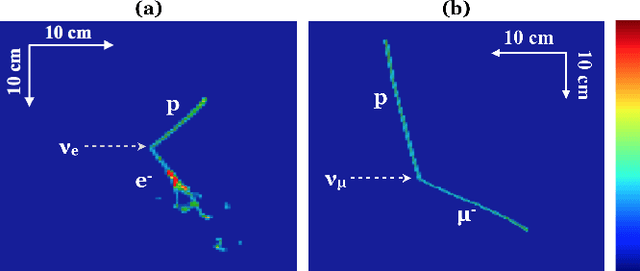
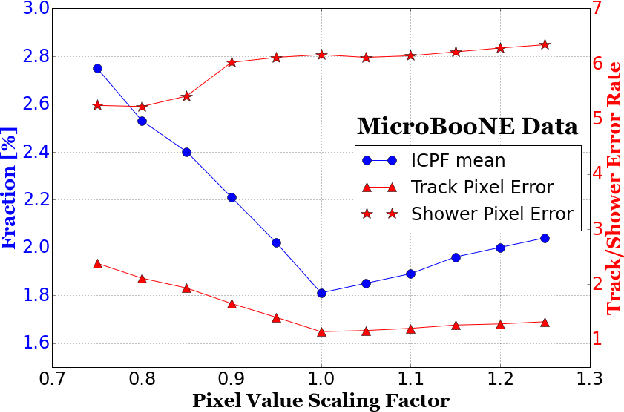
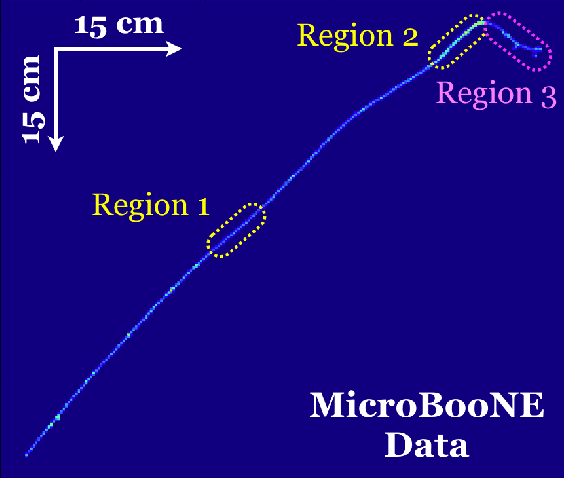
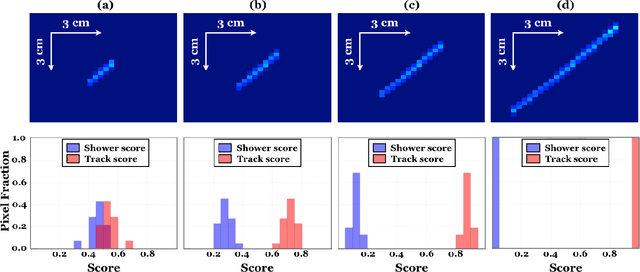
Abstract:We have developed a convolutional neural network (CNN) that can make a pixel-level prediction of objects in image data recorded by a liquid argon time projection chamber (LArTPC) for the first time. We describe the network design, training techniques, and software tools developed to train this network. The goal of this work is to develop a complete deep neural network based data reconstruction chain for the MicroBooNE detector. We show the first demonstration of a network's validity on real LArTPC data using MicroBooNE collection plane images. The demonstration is performed for stopping muon and a $\nu_\mu$ charged current neutral pion data samples.
 Add to Chrome
Add to Chrome Add to Firefox
Add to Firefox Add to Edge
Add to Edge